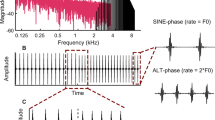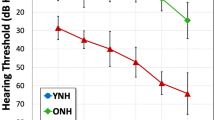Abstract
Previous studies have found greater P3 amplitude over right than left hemisphere sites in a tonal oddball task with a reaction time (RT) response. This asymmetry had a central topography, and interacted with response hand. Identification of the processes underlying these asymmetries requires the use of additional methods for separating response- and stimulus-related contributions. We applied local Hjorth and spherical spline algorithms to compute surface Laplacian topographies of ERP data recorded from 30 scalp electrodes in a pooled sample of 46 right-handed healthy adults. For both methods, the current sources underlying the late positive complex were largest at medial parietal regions, but were asymmetric at central and frontocentral sites. Although a frontocentral sink contralateral to the response hand contributed to the asymmetry of the classic P3 peak, the source asymmetry was most robust after the sink had resolved. The late source was largest at electrode C4 for right hand responses, and was further enhanced in subjects showing a dichotic left ear advantage, but was unrelated to response speed. We conclude that the right hemisphere source reflects an interaction of response-related asymmetries with right hemisphere processes responsible for pitch discrimination.
Similar content being viewed by others
References
Alexander, J.E., Bauer, L.O., Kuperman, S., Morzorati, S., O'Connor, S.J., Rohrbaugh, J., Porjesz, B., Begleiter, H., Polich, J. Hemispheric differences for P300 amplitude from an auditory oddball task. Int. J. Psychophysiol., 1996, 21:189–196.
Alexander, J.E., Porjesz, B., Bauer, L.O., Kuperman, S., Morzorati, S., O'Connor, S.J., Rohrbaugh, J., Begleiter, H., Polich, J. P300 hemispheric asymmetries from a visual oddball task. Psychophysiology, 1995, 32:467–475.
Arezzo, J.C., Tenke, C.E. and Vaughan, H.G., Jr. Movement related potentials within the hippocampal formation of the monkey. Brain Res., 1987, 401: 79–86.
Bruder, G.E, Tenke, C.E., Towey, J.P., Leite, P., Fong, R., Stewart, J.E., McGrath, P.J. and Quitkin, F.M. Brain ERPs of depressed patients to complex tones in an oddball task: relation of reduced P3 asymmetry to physical anhedonia. Psychophysiology, in press.
Cohen, J. Statistical power analysis for the behavioral sciences (2nd Edition). Erlbaum: Hilldale, N.J. (1988).
Freeman, J.A. and Nicholson, C. Experimental optimization of current source-density technique for anuran cerebellum. J. Neurophysiol., 1975, 38(2):369–82.
Hjorth, B. Source derivation simplifies topographical EEG interpretation. American Journal of EEG Technology, 1980, 20:121–132.
Johnson, R., Jr. On the neural generators of the P300 component of the event-related potential Psychophysiology, 1993, 30:90–97.
Kayser, J., Tenke, C.E. and Bruder, G.E. Dissociation of brain ERP topographies for tonal and phonetic oddball tasks. Psychophysiology, in press.
Knight, R.T., Scabini, D., Woods, D.L. and Clayworth, C.C. Contributions of temporal-parietal junction to the human auditory P3. Brain Res., 1989, 502: 109–116.
Kopp, B., Mattler, U., Goertz, R. and Rist, F. N2, P3 and the lateralized readiness potential in a nogo task involving selective response priming. Electroenceph. Clin. Neurophysiol., 1996, 99:19–27.
Kutas, M. and Donchin, E. Preparation to respond as manifested by movement-related potentials. Brain Research, 1980, 202: 95–115.
McCarthy, G., Wood, C.C., Williamson, P.D. and Spencer, D.D. Task-dependent field potentials in human hippocampal formation. J. Neurosci., 1989, 9: 4253–68.
Mitzdorf, U. Current source-density method and application in cat cerebral cortex: investigation of evoked potentials and EEG phenomena. Physiol. Rev. 1985, 65: 37–100.
Neville, H. Electrographic correlates of lateral asymmetry in the processing of verbal and nonverbal auditory stimuli. J. Psycholing. Res., 1974, 3: 151–163.
Nunez, P.L. Electric fields of the brain: The neurophysics of EEG, New York: Oxford, 1981.
Oldfield, R.C. The assessment and analysis of handedness: The Edinburgh Inventory. Neuropsychologia, 1971, 9: 97–113.
Paller, K.A., McCarthy, G., Roessler, E., Allison, T. and Wood, C.C. Potentials evoked in human and monkey medial temporal lobe during auditory and visual oddball paradigms. Electroencephalogr. Clin. Neurophysiol., 1992, 84: 269–79.
Perrin, F., Pernier, J., Bertrand, O. and Echallier, J.F. Spherical splines for scalp potential and current density mapping. Electroencephalogr. Clin. Neurophysiol., 1989, 72:184–187.
Roberts, L.E., Rau., H., Lutzenberger, W. and Birbaumer, N. Mapping P300 waves onto inhibition: Go/NoGo discrimination. Electroencephalogr. Clin. Neurophysiol., 1994, 92:44–55.
Schroeder, C.E., Steinschneider, M.S., Javitt, D., Tenke., C.E., Givre, S.J., Mehta, A.D., Simpson, G.V., Arezzo, J.C. and Vaughan, H.G., Jr. Localization and identification of underlying neural processes. In G. Karmos, M. Molnar, V. Csepe, I. Czigler and J.E. Desmedt (Eds), Perspectives of Event-related potentials in research (EEG Suppl 44), Elsevier, Amsterdam, 1995, 55–75.
Semlitsch, H.V., Anderer, P., Schuster, P. and Presslich, O. A solution for reliable and valid reduction of ocular artifacts, applied to the P300 ERP, Psychophysiology, 1986, 23: 695–703.
Sidtis, J.J. The complex tone test: implications for the assessment of auditory laterality effects. Neuropsychologia, 1981, 19: 103–112.
Simson, R., Vaughan, H.G., Jr. and Ritter, W. The scalp topography of potentials in auditory and visual Go/NoGo tasks. Electroencephalogr. Clin. Neurophysiol., 1977, 43: 864–75.
Starr, A., Sandroni, P. and Michaelewski, H.J. Readiness to respond in a target detection task: pre-and post-stimulus event-related potentials in normal subjects. Electroencephalogr. Clin. Neurophysiol., 1995, 96: 76–92.
Tenke, C.E., Bruder, G.E., Towey, J. Leite, P. and Sidtis, J.J. Correspondence between ERP and behavioral asymmetries in a dichotic complex tone test. Psychophysiology, 1993a, 30: 62–70.
Tenke, C.E., Schroeder, C.E., Arezzo, J.C. and Vaughan, H.G., Jr. Interpretation of high-resolution current source density profiles: a simulation of sublaminar contributions to the visual evoked potential. Exp. Brain Res., 1993b, 94:183–192.
van de Vijver, R., Kok, A, Bakker, D.J. and Bouma, A. Lateralization of ERP components during verbal dichotic information processing. Psychophysiology, 1984, 21: 123–134.
Woods, D.L., Hillyard, S.A., and Hansen, J.C. Event-related brain potentials reveal similar attentional mechanisms during selective listening and shadowing. Journal of Experimental Psychology: Human Perception and Performance, 1984, 10: 761–777.
Author information
Authors and Affiliations
Rights and permissions
About this article
Cite this article
Tenke, C., Kayser, J., Fong, R. et al. Response- and Stimulus-Related ERP Asymmetries in a Tonal Oddball Task: A Laplacian Analysis. Brain Topogr 10, 201–210 (1998). https://doi.org/10.1023/A:1022261226370
Issue Date:
DOI: https://doi.org/10.1023/A:1022261226370




